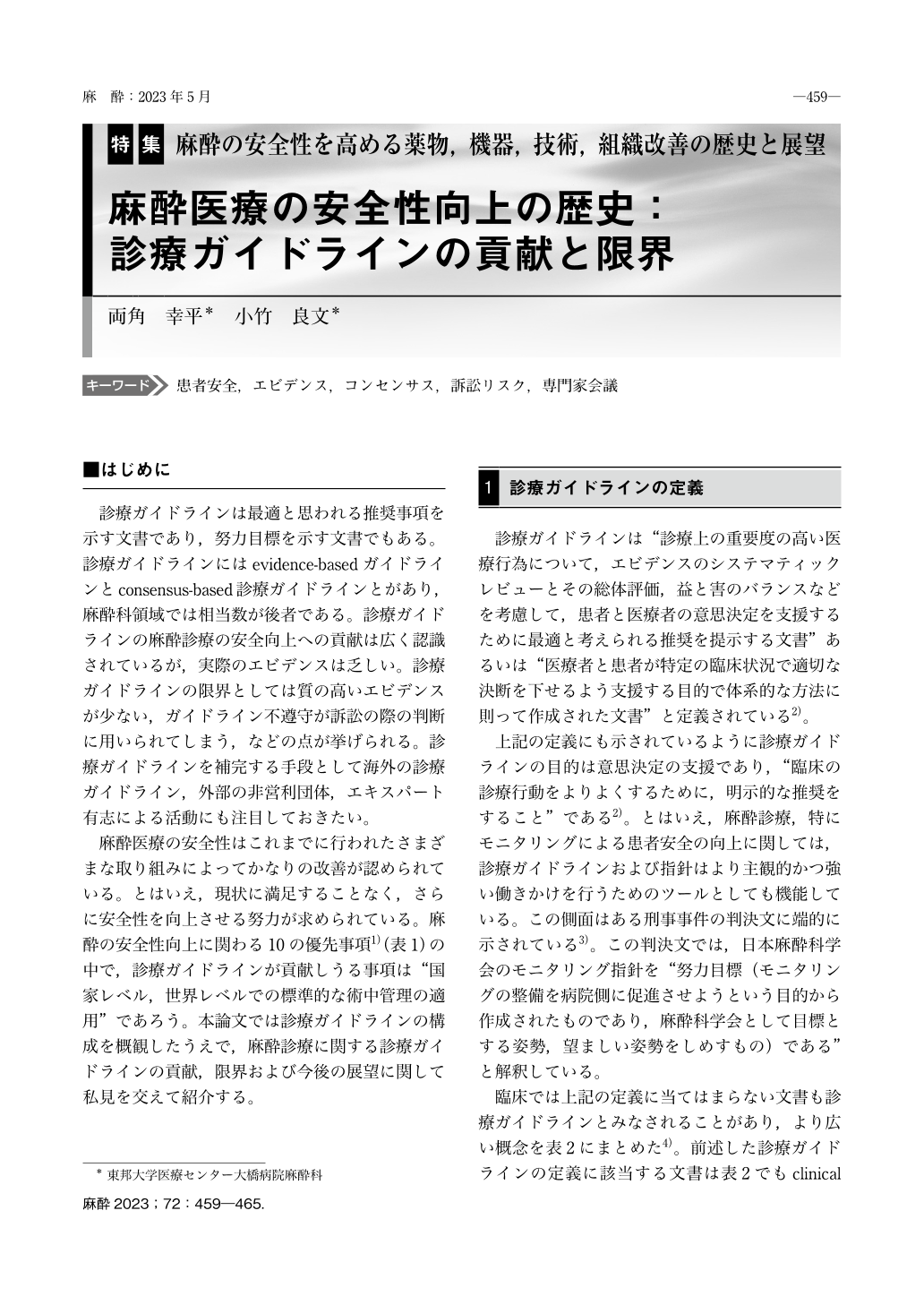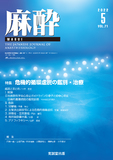Japanese
English
- 有料閲覧
- Abstract 文献概要
- 1ページ目 Look Inside
- 参考文献 Reference
はじめに
診療ガイドラインは最適と思われる推奨事項を示す文書であり,努力目標を示す文書でもある。診療ガイドラインにはevidence-basedガイドラインとconsensus-based診療ガイドラインとがあり,麻酔科領域では相当数が後者である。診療ガイドラインの麻酔診療の安全向上への貢献は広く認識されているが,実際のエビデンスは乏しい。診療ガイドラインの限界としては質の高いエビデンスが少ない,ガイドライン不遵守が訴訟の際の判断に用いられてしまう,などの点が挙げられる。診療ガイドラインを補完する手段として海外の診療ガイドライン,外部の非営利団体,エキスパート有志による活動にも注目しておきたい。
麻酔医療の安全性はこれまでに行われたさまざまな取り組みによってかなりの改善が認められている。とはいえ,現状に満足することなく,さらに安全性を向上させる努力が求められている。麻酔の安全性向上に関わる10の優先事項1)(表1)の中で,診療ガイドラインが貢献しうる事項は “国家レベル,世界レベルでの標準的な術中管理の適用” であろう。本論文では診療ガイドラインの構成を概観したうえで,麻酔診療に関する診療ガイドラインの貢献,限界および今後の展望に関して私見を交えて紹介する。
A practice guideline typically summarizes recommendations of treatments, and it sometimes declares the goals of professional societies. Practice guidelines consist of evidence-based guidelines and consensus-based guidelines. Significant number of anesthesia-related guidelines are comprised with consensus-based guidelines. Most clinicians acknowledge the contribution of practice guidelines for the patient safety;however, such notion may not fully be supported by the concrete evidence. Limitations of practice guidelines include small numbers of high-quality evidence for unintended use during litigation process. Users may seek additional information such as guidelines formulated by foreign societies and recommendations made by non-profit organizations and expert panels.

Copyright © 2023 KOKUSEIDO CO., LTD. All Rights Reserved.


